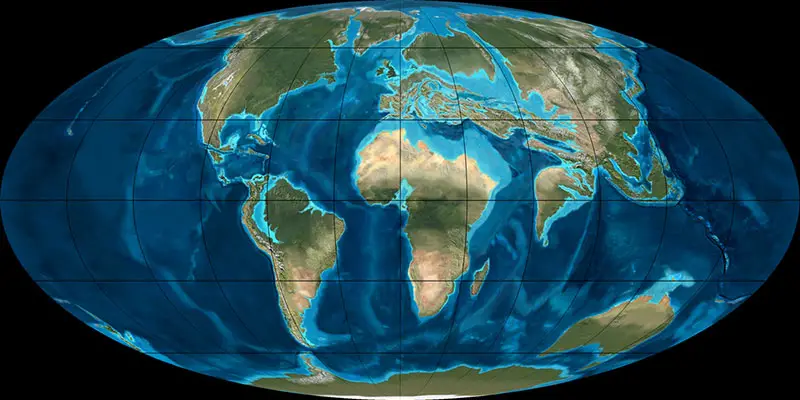†Stockia (Omomyidae)
Stockia ist eine Primatengattung innerhalb der Familie Omomyidae, deren 2 Mitglieder ab dem frühen Paläogen (Eozän) im Lutetium lebten, das vor ungefähr 47,8 Millionen Jahren begann und bis vor 41,3 Millionen Jahren andauerte. Viele Überreste wurden in Vereinigte Staaten von Amerika (USA) gefunden.
Stockia aus der Familie Omomyidae (Tribus Uintaniini innerhalb der Unterfamilie Omomyinae) war im Eozän in Nordamerika verbreitet war.
Stockia powayensis
Das Typusexemplar mit der Bezeichnung LACM(CIT) 2234 ist ein rechtes Unterkieferfragment mit Backenzähnen (M1-3). Der Fund stammt aus undifferenzierten Konglomeraten der Friars Formation (San Diego County, California) und ist zwischen 46,2 und 42,0 Millionen Jahre alt.
| Sammlung | Kommentar zum Fundort | Epoche, Alter | Geologie, Formation |
|---|---|---|---|
| San Diego Mission (CIT 249) | Friars | ||
| Kommentar z. Stratigraphie | Museum | Kommentar z. Taxonomie | |
| undifferentiated | CIT | stratigraphic position based on that of new San Diego Mission localities of Walsh 1996b |
| Physiologie | |
|---|---|
| Gewicht: | ? |
| Schwestertaxa | |
Literatur
C. L. Gazin 1958, A review of the middle and upper Eocene primates of North America. Smithsonian Miscellaneous Collections. 136:1, p. 1 - 112S. L. Walsh 1997, New specimens of Metanoiamys, Pauromys, and Simimys (Rodentia: Myomorpha) from the Uintan (middle Eocene) of San Diego County, California, and comments on the relationships of selected Paleogene Myomorpha. Proceedings of the San Diego Society of Natural History. 32:1, p. 1 - 20
M. R. Dawson, K. N. Constenius 2018, Mammalian fauna of the Middle Eoene Kishenehn Formation, Middle Fork of the Flathead River, Montana. Annals of Carnegie Museum. 85:1, p. 25 - 60
